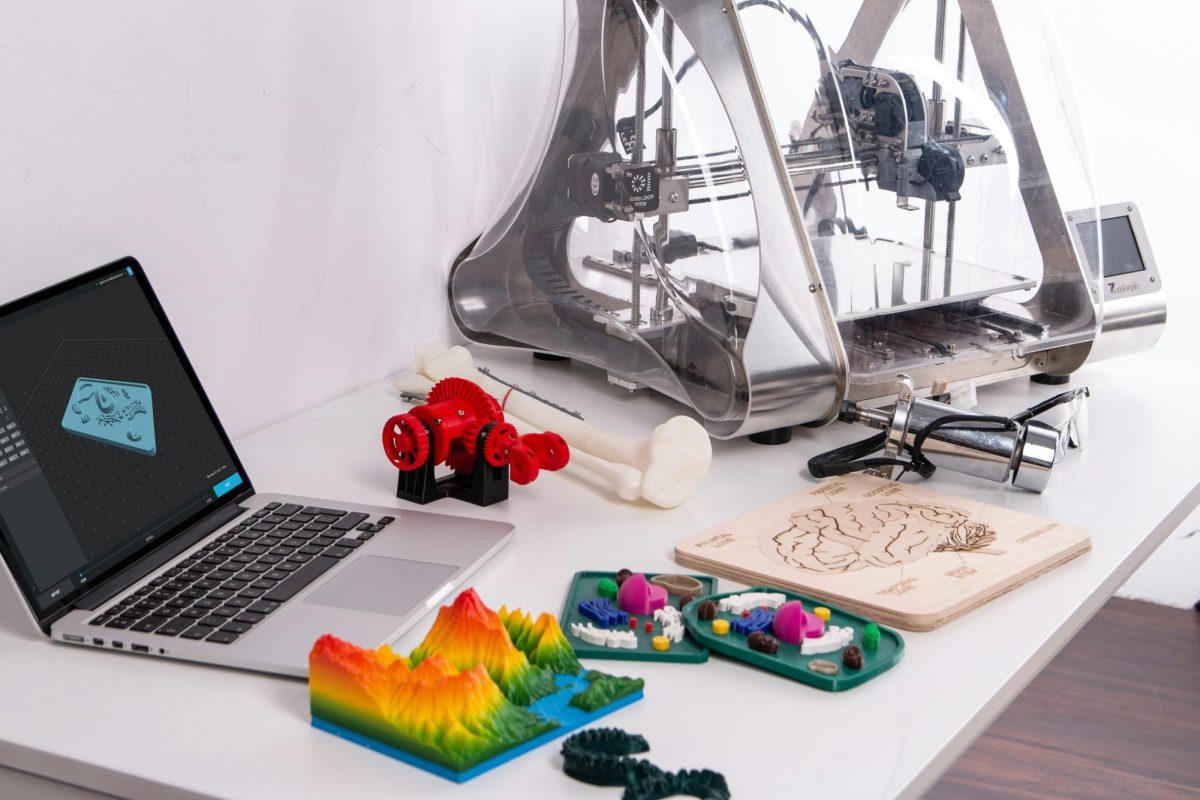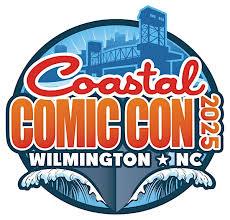***The following is a project funded by Duke Energy***
PART ONE
By: Makayla P, 11th Grade
STEM stands for science, technology, engineering, and mathematics and is a development process for learning the “Acts of Science” throughout different aspects of life. It is important that students in our Brunswick County are learning the importance of STEM in their daily tasks at school and yet the topic is fading slowly from our curriculum right before our eyes.
In past years, schools have found fun and interesting ways of keeping STEM alive in their students’ education. For example, the Science Olympiad has been one common way to keep students engaged while also having fun.
The Science Olympiad is a yearly competition in which different schools participate to show off their knowledge of science. This competition ranges from elementary to high school. It is an all-day event with several different activities in which students partake with their schools. Some examples of these events include rocket racing, tower building, robot races, and chemistry competitions.
These are only a few of the many competitions that are held at the event. This program is an extraordinary way to teach students about STEM and prepare them for future careers that they may pursue in those STEM disciplines.
Although this program is extremely helpful and engaging, the passion for it in schools is beginning to weaken. Students are losing interest in STEM and teachers are losing the confidence to teach it. However, it is important to keep STEM alive in our schools.
The art of STEM is extremely important in every student’s daily life no matter what interest they prefer. According to Dane Fisher, Science teacher at Brunswick County Early College High School, “Hands-on laboratories tend to stick with them more and make them realize they can do stuff they didn’t think they could do before.”
Not only does STEM give students the experience they need to broaden their intelligence on the subject of science but also gives them a feeling of confidence in what they do that can make them realize how much more they can do if they put their mind and heart into it.
Benjamin Ford, Brunswick County Early College High School science teacher, states: “Technology is taking over our science so now we just watch other people do things instead of doing it ourselves.”
Through the years as our economy has grown, so has our technology. Instead of encouraging our students to work hands-on with a science experiment, we have them watching someone else do all the work which holds students back from learning the full concept of the experiment.
STEM is drifting from students under the pressure of several aspects. According to Holly Majewski, Belville Elementary School STEM elective teacher, “I think STEM has had the same problem as the other elective classes, which are the big ugly words of standardized testing. I am not against standardized testing, but I am against limiting what students learn in the classroom because of them. Teaching to a test is not preparing our kids for what is out there or what is available to them.”
STEM is falling behind in the line of importance of education in our county and kids are suffering firsthand because of the unfair priority of documenting every test score and rubric in the classrooms instead of realizing what kids can do when they do not feel the pressure of a bad grade on their shoulders. The STEM program helps students to fully realize what they are capable of and broadens their career choices on an astronomical level.
PART TWO
By: Gabriel H, 9th Grade
STEM programs are more than just programs, they are experiences. They build memories and relationships, and above that, they build ideas.
STEM programs are the foundation for our future when it comes to the innovation of society.
Getting a kid interested in STEM can be life-changing. It can cultivate a future that a kid may have never thought possible. In STEM, there are no boundaries. Anything and everything is possible.
STEM allows kids to be themselves. The word ‘nerd’ can be derogatory in most cases, but in STEM, being called a ‘nerd’ is the best compliment. Students express themselves and do what they are interested in freely, without being judged.
STEM builds so much more than just towers and bridges. It builds confidence, builds resilience, and more than that, STEM builds relationships. It creates a collaborative environment, a skill so valued in the workforce.
But, how do we get kids interested in STEM? What is there around us, specifically in Brunswick County, to help allow kids to explore the endless possibilities involving STEM?
In Brunswick County, there are some STEM programs funded and led by Brunswick County Schools. Each elementary school and middle school has designated STEM classes. In these classes, students receive grades, feedback, and teacher assistance on their STEM projects.
But other than schools, what else does Brunswick County have to offer when it comes to STEM? What does Brunswick County offer to help supplement school STEM classes?
In Brunswick County, the North Carolina Cooperative Extension, through its 4H (Head, Heart, Hands, and Health) program offers a STEM camp every year. This summer camp allows kids to explore STEM projects, freely, without the fear of a bad grade.
Brunswick County, in partnership with many Southeastern North Carolina counties, is partnered with STEM Ecosystem, whose mission is to help bring STEM programs into Southeastern North Carolina.
STEM Ecosystem provides access to “aspirational” STEM opportunities. However, that is not their only mission. They also strive to support an environment where those in the field of STEM can come together to share their experiences.
In addition to these programs, the Science Olympiad and robotics clubs are other programs that involve experiences in STEM. Robotics gives students a chance to use their hands, math skills, and science skills to build working robots – a glimpse into our future. Science Olympiad, on the other hand, allows students to choose what they are interested in when it comes to STEM and compete in relevant competitions for those interests.
What programs are next in Brunswick County’s future? Only time will tell but, for those interested in STEM, take these opportunities that are available now. If you do not know whether or not you are interested in STEM, take these opportunities to find out. STEM is our future, but STEM is also our present.
We need scientists, software engineers for new technologies, all kinds of engineers, mathematicians. We need STEM. And STEM not only builds bridges, it builds relationships, friendships, and so much more.
PART THREE
By: Gabriel H, 9th Grade
When it comes to the effectiveness of STEM programs, one of the biggest factors is awareness. If one hears about a STEM program, whether it be over social media, on the radio, or even through the newspaper, they are more likely to join than if they had to research STEM programs all by themselves. STEM awareness usually falls short for many programs, eventually leading to their ultimate downfall.
In many areas over the past decade, STEM has exploded with many more kids and students participating in STEM-related activities. Technology is constantly evolving and with the presence of technology everywhere, many more opportunities in STEM have been created.
But, how many kids participate in STEM-related activities? Are there going to be enough people to fill the ever-growing need for new STEM jobs?
As of 2024, only 20% of graduating high school students were prepared for college-level STEM work. Also, in 2025, it is estimated that 3.5 million STEM jobs will need to be filled; however, it is forecasted that over 2 million of those jobs will go unfilled due to a lack of qualified employees.
But, what’s the benefit of STEM? What pressure are students getting to go into STEM, and is there still a potential for job growth?
Since 1990, STEM jobs have grown over 79%, with an expected additional growth of 10.4% percent between now and 2033. Over 76% of parents hope that their children will go into a STEM-related field. Of those students who do aim to get a degree in a STEM-related field, only 50% make it and obtain the degree.
There is a solution to get more kids to go into STEM fields and obtain their degrees. You have to start kids out at a young age, introducing them to hands-on experiences in STEM. You have to get kids interested in order for them to participate. Raising awareness is one of the best ways to get kids to even just try STEM out.
Parents play a huge and vital role, as well, in getting their kids interested and involved in STEM. Parental support for their kid’s interests keeps that kid coming back again and again. Through their parents’ support, they can feel a sense of accomplishment with what they are doing in STEM. This is encouraging for kids. It helps to build their confidence and self-esteem in STEM.
Awareness in STEM can make the statistics above shoot up exponentially. Raising awareness and getting kids involved is crucial to the successful nature of STEM. Our society is doing more now than ever to raise awareness and increase the amount of people who participate in STEM. STEM is our future.
All statistics above were pulled from CodeWizardsHQ
PART FOUR
By: Makayla P, 11th Grade
“Many students are interested in doing things like building, or designing, or using their hands to work. Unfortunately, those opportunities are not communicated well to kids.” Said Holly Majewski, Belville Elementary School STEM elective teacher, when asked about the decline in STEM in Brunswick County. Our county is severely behind when it comes to the knowledge of STEM and the dedication to keep STEM alive for our youth.
There is a program for young girls interested in STEM in North Carolina. This program is for girls who desire a future in STEM and want to attend a university in the subject. This program is held over the summer for high school girls. Several counties in North Carolina participate in this program and yet in our county, it is underwhelmed.
From 2014 to 2015 Brunswick County was recognized with 11 top schools for the STEM program. According to the North Carolina Department of Public Instruction, “These recognized schools represent the very best in STEM education in North Carolina which exemplify outstanding leadership and learning and empower keen creative thinking, reasoning, and teamwork.”
Brunswick County Early College High School was the High School that was represented. The list was filled with counties that made the list multiple times such as Wake County which is still in the running now but Brunswick County was only featured once. Brunswick County has since then been listed as inactive since 2015.
Our county does not take the importance of STEM as seriously as other counties do and the list of featured schools is evidence of that. Brunswick County may have once been one of the best STEM featured programs but now STEM is almost nonexistent, not only in our schools but in public events.
The importance of STEM has been taken over by subjects that will require testing such as English and mathematics. Majewski states “I used to teach elementary science, but when the focus of curriculum changed to ELA and Math, the time allotted for science, social studies, and other vocational subjects was either removed or greatly reduced.”
As schools are being taken over by standardized testing material, STEM is slowly leaving the curriculum. Other subjects are being prioritized which ignores the STEM program. Our county is falling behind on the importance of STEM compared to others, and it is important to change that.
PART FIVE
By: Gabriel Hughes, 9th Grade
STEM programs reach much farther than just schools and programs in your county. With technology being so ubiquitous in today’s society, many STEM opportunities and programs have moved online. The ‘T’ in STEM, stands for technology.
However, the drawback of these programs is that they do not, in most cases, provide hands-on experiences, a factor that usually gets kids interested in STEM. Or, the cost of the programs is exponential, limiting those who can participate. While these factors may not be a limitation for some, they do not allow the opportunity for all to participate.
One of the many online-originated STEM programs is offered by LEGO. This program only allows for preschool to middle school children. The program is designed for classrooms to create “Aha” moments and engage students in STEM. LEGO aligns its lessons, of which there are over 400, to certain STEM and science standards. In addition, LEGO has kits that can be purchased, but their high costs limit who can have access to unlock “Aha” moments.
Another one of the online STEM programs is Girls Who Code. Girls Who Code is a national non-profit organization, which, unlike its name, promotes diversity. However, their other mission is to encourage girls and young women to code, due to the chronic underrepresentation that women receive in computer science fields. This program offers free at-home coding lessons for all. In addition, they offer summer programs, at no cost, but they do require applications.
One of the many things that will be the future of our world is Artificial Intelligence (AI). Therefore, AI is an important addition when it comes to STEM. The Inspirit AI program is a two-week project-based program that focuses on certain issues that can be solved using AI. This program is taught by Stanford and MIT alumni and graduate students. The program’s mission is to inspire people through the use of the defining technology of our time. This program does require an application and if accepted, a very hefty tuition, limiting those who can participate.
John Hopkins University offers many online summer STEM courses for pre-college students during the summer months. Most of these courses last two weeks and are self-paced. These classes are available for all students who have completed the ninth grade. The topics for these courses range in different areas from chemistry to biology. The courses do require an application, an official academic transcript, and an application fee. If accepted, more documentation will be required, and an initial payment, which may not allow all to participate.
To participate in STEM, one should not have to pay a small fortune. One should be able to do what they are interested in for little to no cost to the participant. There must be opportunities for ALL who are interested in STEM to be able to participate, even if they may not have the finances to do so online. If a kid’s school district or county does not have a lot of STEM programs, it is crucial to have other opportunities for them to help build not only their own but also our future in Brunswick County.
PART SIX
By: Gabriel H, 9th Grade
The Goodnight Scholarship is a coveted scholarship for those students looking to pursue a career in a STEM-related field. But what is it? What is this scholarship to which over 1600 students receive invitations to apply every year?
The Goodnight Scholarship offers $23,000 a year in financial aid for students to attend NC State University, which some consider the MIT of the South. This scholarship is given to students who have the talent to become “transformational leaders at NC State University, in North Carolina and in the world.”
While over 1600 people receive invitations for this scholarship, only 100 people are awarded this scholarship every year. Recently, NC State University announced the finalists for this scholarship. There were 180 finalists from counties and schools all over North Carolina.
To provide a little bit of history, the Goodnight Scholarship was first established in 2008 and is funded by North Carolinian natives and Dr. Jim Goodnight, an NC State alumni. The scholarship is targeted to middle and low-income families wanting to study STEM or STEM-related fields. The scholarship is meant to empower the recipients to “Pay it Forward.” However, paying it forward does not necessarily mean through money, it means knowledge and leadership.
The Goodnight Scholarship has four main goals:
1. “Developing essential skills and competencies”
2. “Developing future STEM leaders and advocates”
3. “Cultivating Champions of Service and Civic Engagement”
4. “Creating a Welcoming and Supportive Community”
Keeping these goals in mind, recipients of the Goodnight Scholarship are given access to programming opportunities (which are hands-on opportunities), travel opportunities, community service opportunities, enrichment grants to help students further pursue their goals, and mentorship opportunities.
This STEM-related scholarship is meant to provide an opportunity for students who want to pursue a career in STEM but might not have the resources. This scholarship is helping to shape our future STEM leaders, allowing for the next generation in the field of STEM.
Receiving an invitation for this scholarship, being a finalist for this scholarship, or especially being a recipient of this scholarship is an honor. Even if you aren’t a recipient, it still shows that your work was recognized and that you can do it and make it in a STEM-related field.
At my school, Brunswick County Early College High School, in the small town of Bolivia, North Carolina, there were two finalists for the Goodnight scholarship. Both of the finalists found out on Friday, February 28, 2025, that they were selected to be recipients of the coveted Goodnight Scholarship.
Only three students from Brunswick County were selected as finalists, and out of those three finalists, the two who attended Brunswick Early College High School BOTH received a scholarship. Angel Deras Alvarado, one of the recipients, is from Leland, North Carolina, and is attending NC State University on the Goodnight Scholarship to study Human Biology. The other recipient, Trevor Smith, is from Bellville, North Carolina, and is also attending NC State University on the Goodnight Scholarship to study Computer Science.
To all those who read this, don’t be afraid to pursue a career in STEM. There are scholarships available to aid in your education. Don’t ever doubt yourself, and if you are invited, just fill out the application.
What’s the worst that could happen?













